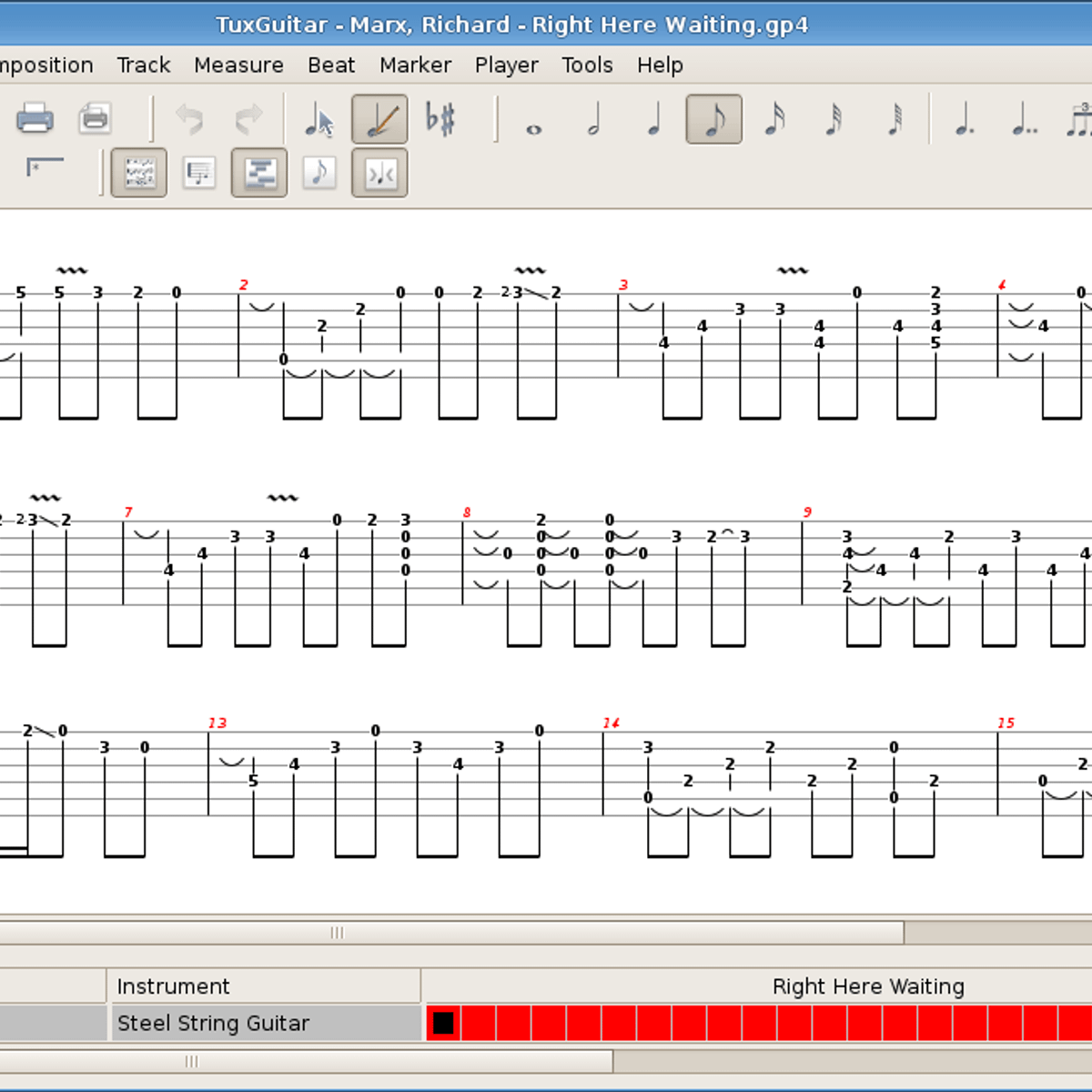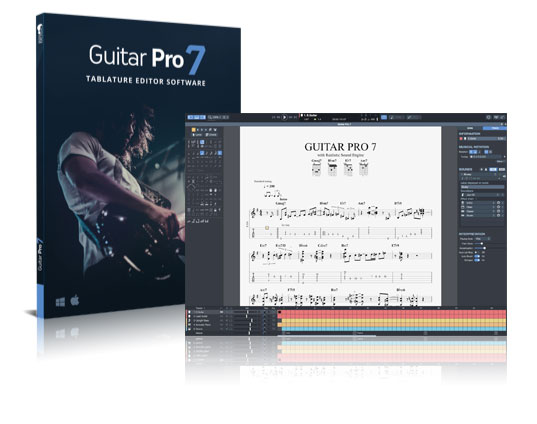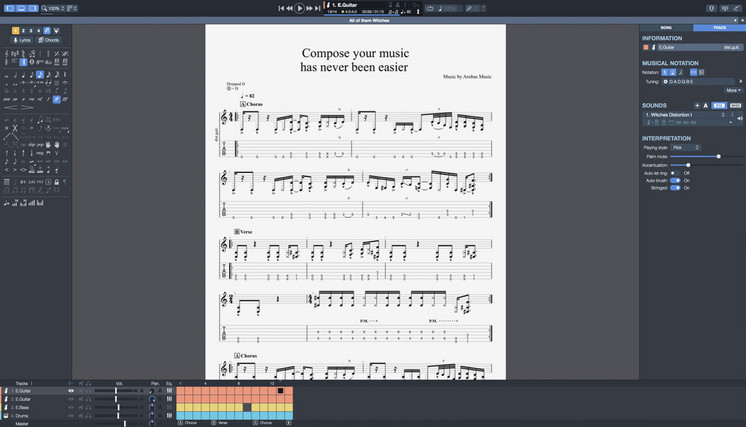GP5 file format description. Many people share.gp5 files without attaching instructions on how to use it. Yet it isn’t evident for everyone which program a.gp5 file can be edited, converted or printed with. On this page, we try to provide assistance for handling.gp5 files.
- Unfortunately, GP7 introduced another new format.gp. While it’s possible to export in the now older.gpx format, you can’t export to the older.gp5 format – so you can’t share anything with other guitarists who still use GP5. Of course, GP7 can import all older.
- Files with the extension of gp3, gp4, gp5 and.gpx are all Guitar Pro files, and the numbering refers to the version of Guitar Pro they were originally created with. The present version of Guitar Pro is GP7, which is the most modern version of the guitar software to date.
- Song = guitarpro.gp5.GP5File(parsedsong,encoding='UTF-8') The following should be enough, as parse already calls readSong here. Song = guitarpro.parse('wetsand.gp5') Finally it looks like the file-format is automatically determined by parse here. As an example you could do something like this.
How To Read Guitar Tabs
As a new guitar player, you will need to learn how to effectively read the guitar Tab if you want to play chords, melodies, and songs. The process can get quite overwhelming, but thanks to this class, everything you need to know is well elaborated.
What's more, we are going to go the extra mile and go over the common elements you see when you pull up a tab.
The 3 Basic Numbering Systems
Ncaa 14 download xbox 360. To fully understand how to read Tabs, you will first need to be familiar with the 3 basic numbering systems.
- Frets: These are the metal strips that lie along the neck of the guitar. Depending on your preferred hand, the pieces appear in numerical order. Starting with the first fret all the way to the last one. They will come in handy when you start learning the chords and scales.
- Fingers: From your fretting hand, your index finger is your first finger, your middle finger is your second, your ring finger is your third, and lastly, your small finger will be your fourth finger. To make the right chords, you will need to know where to place your fingers.
- Strings: The strings make the third numbering system. The lines are arranged in numerical order from the thinnest to the thickest. That is to say; the thinnest will be the first and the thickest the sixth. Pretty simple.
The Basic Layout

Now, onto the basic layout of Tabs. Let's consider a Tab you want to learn. In most cases, you will notice some standard notation on the top and bottom of the Tab. You are also likely to see six horizontal lines of the Tab that will represent the six guitar strings.
The topmost line is the high E guitar string, and the bottom line will be the low E string of the guitar. In other words, the uppermost line will be the thinnest, and the bottom-most will be the thickest.
This brings us to our first Tab tip: Always read Tab from your left to your right. In case they are all stacked on top of the other, then that is the only time you can simultaneously play multiple notes.
Notes and Chords

I have mentioned notes and chords before. So what exactly are they, and do they do?The notes are the single numbers from your right to left on a piece of Tab that will represent a melody line or perhaps a solo you might play.
The chords are the stacked numbers on a piece of tablature. They will signify a harmony of some kind.
Palm Muting and Muted Notes
Having understood the basics of a Tab layout, it is time to look into the common elements you are likely to see when trying to play your favorite song.
Palm Muting: If you can see a P.M marker, that's the palm muting. For the little dashes, those are the number of times you should continue palm muting the notes.
Muted Notes: Also known as the dead notes, muted notes are symbolized by an 'X' on a particular string. Every time you see a muted note, you are expected to soften the note using your right or left hand. In addition, you should play the note to completely mute the pitch. This often occurs in strumming patterns or raked parts of lead lines.
Bending: Whenever you see an arrow pointing upwards, you will be expected to bend a note. The upward-pointing arrow will be next to one or more numbers. Next to the shaft, you should see an indicator showing the distance you are to bend the note. It will also be essential to mention that the bend can be 'full' or ' .'
This brings us to our next tip, which is the bending tip: A full bend means bending up an entire step. In the same context, a half bend will require you to bend up half a step.
Sliding: remember a fret number we talked about earlier? The presentation of a fret number, a line, and another fret number will signify sliding.In most cases, depending on your sliding pitch, the line will be slanted up or down. That is to say: the line will be slanted up if you are sliding from a higher pitch and low if you are sliding from a lower pitch.
Hammer-ons and Pull-offs: you will use a little arc between two or more adjacent notes to identify hammer-ons and pull-offs. If this is a bit difficult for you to interpret, do not worry. It gets better the moment you start to familiarize yourself with a variety of musical scenarios. I'm pretty sure you will get the whole idea.
This brings us to our last tip: 'Legato' is another word used to refer to hammer-ons and pull-offs.
Vibrato: When you repeatedly bend and release note over and over, we call that a vibrato. It is used for a powerful vocal effect. With a squiggly line over a note, you can tell the intensity of the vibrato. The thicker the squiggly line is, the more intense or wide the vibrato will be. The vice-versa is also true.
Downstrokes and Upstrokes: finally, on to the downstrokes and upstrokes.Take an author of a piece of music as an example. If the composer has a specific picking pattern, you are likely to see either a squared-off upside-down ' U' or downward-facing arrow. These indicators represent the downstrokes and upstrokes, respectively. If the indicators are not included, then the player is usually free to experiment and try out his own picking patterns.
This takes us to the close of our session. As elaborated above, learning the Tab can be quite complicated, but I hope this class lifted some of the weight for you. From the class, it is also evident that practice will also come in handy to pick up all the concepts right. Otherwise, it will all just be a mystery to you. More importantly, remember to have fun and enjoy the process.
| Filename extension | |
|---|---|
| Internet media type | application/gpx+xml and application/octet-stream |
| Initial release | 2002 |
| Latest release | |
| Extended from | XML |
| Open format? | yes |
| Website | www.topografix.com/gpx.asp |
Gp5 Formats
GPX, or GPS Exchange Format, is an XML schema designed as a common GPS data format for software applications. It can be used to describe waypoints, tracks, and routes. The format is open and can be used without the need to pay license fees. Location data (and optionally elevation, time, and other information) is stored in tags and can be interchanged between GPS devices and software. Common software applications for the data include viewing tracks projected onto various map sources, annotating maps, and geotagging photographs based on the time they were taken.
Data types[edit]
The required data for a GPX file can be seen below.[2] Ellipsis (..) means that the previous element can be repeated. Additional data may exist within every markup but is not shown here:
- wptType is an individual waypoint among a collection of points with no sequential relationship. It consists of the WGS 84 (GPS) coordinates of a point and possibly other descriptive information.
- rteType is a route, an ordered list of routepoint (waypoints representing a series of significant turn or stage points) leading to a destination.[3]
- trkType is a track, made of at least one segment containing waypoints, that is, an ordered list of points describing a path.[3] A Track Segment holds a list of Track Points which are logically connected in order. To represent a single GPS track where GPS reception was lost, or the GPS receiver was turned off, start a new Track Segment for each continuous span of track data.
Conceptually, tracks are a record of where a person has been and routes are suggestions about where they might go in the future. For example, each point in a track may have a timestamp (because someone recorded where and when they were there), but the points in a route are unlikely to have timestamps (other than estimated trip duration) because route is a suggestion which might never have been traveled.
Gp5 Format Tool
Technically:
- a track is made of a sufficient number of trackpoints to precisely draw every bend of a path on a bitmap. It is:
- the raw output of, for example, a GPS recording the course of one's trip, or
- the rearrangement of such points to remove excess ones, or
- data from any source such as extracted from a vector map
- a route is made of routepoints between which a program must get the corresponding track from a vector map to draw it. The routepoints may be crossings or junctions or as distant as stopover towns, such as those making a trip project. Hence, such a project can be saved and reloaded in a GPX file.
- a process called routing computes a route and may produce a GPX route made of the routepoints where some driver action takes place (turn left, enter a roundabout, limit speed, name of the next direction road, etc..). The GPX points may contain the text of those instructions.
- the GPX file may contain both route and track so that a program can get precise points from the track even if it has no access to a vector map.
The minimum properties for a GPX file are latitude and longitude for every single point. All other elements are optional. Some vendors, such as Humminbird and Garmin, use extensions to the GPX format for recording street address, phone number, business category, air temperature, depth of water, and other parameters.[4][5]

Units[edit]
Latitude and longitude are expressed in decimal degrees, and elevation in meters, both using the WGS 84 datum. Dates and times are not local time, but instead are Coordinated Universal Time (UTC) using ISO 8601 format.[1]
Sample GPX document[edit]
The following is a truncated (for brevity) GPX file produced by a GarminOregon 400t hand-held GPS unit. Z nation season 1 direct download. This document does not show all functionality which can be stored in the GPX format — for example, there are no waypoints or extensions, and this is part of a track, not a route — but its purpose is to serve as a brief illustration. Finesse 356 sewing machine user manual.
See also[edit]
- Concepts
- OpenStreetMap, a collaborative project to create free editable maps using, among others, GPX traces
- File formats
- KML, the equivalent format compatible with Google Earth
- TCX, Garmin Training Center XML
- Standards
- Software
- GPSBabel, used to upload/download/convert GPX files
References[edit]
- ^ abGPX: the GPS Exchange Format
- ^topografix.com
- ^ abtopografix.com
- ^'Garmin Mass Storage Mode Devices - Garmin Developer'. Garmin. Retrieved 2013-03-26.
- ^'Garmin Gpx Extensions Schema' (xsd (XML schema)). Garmin. Retrieved 2013-03-26.
External links[edit]
